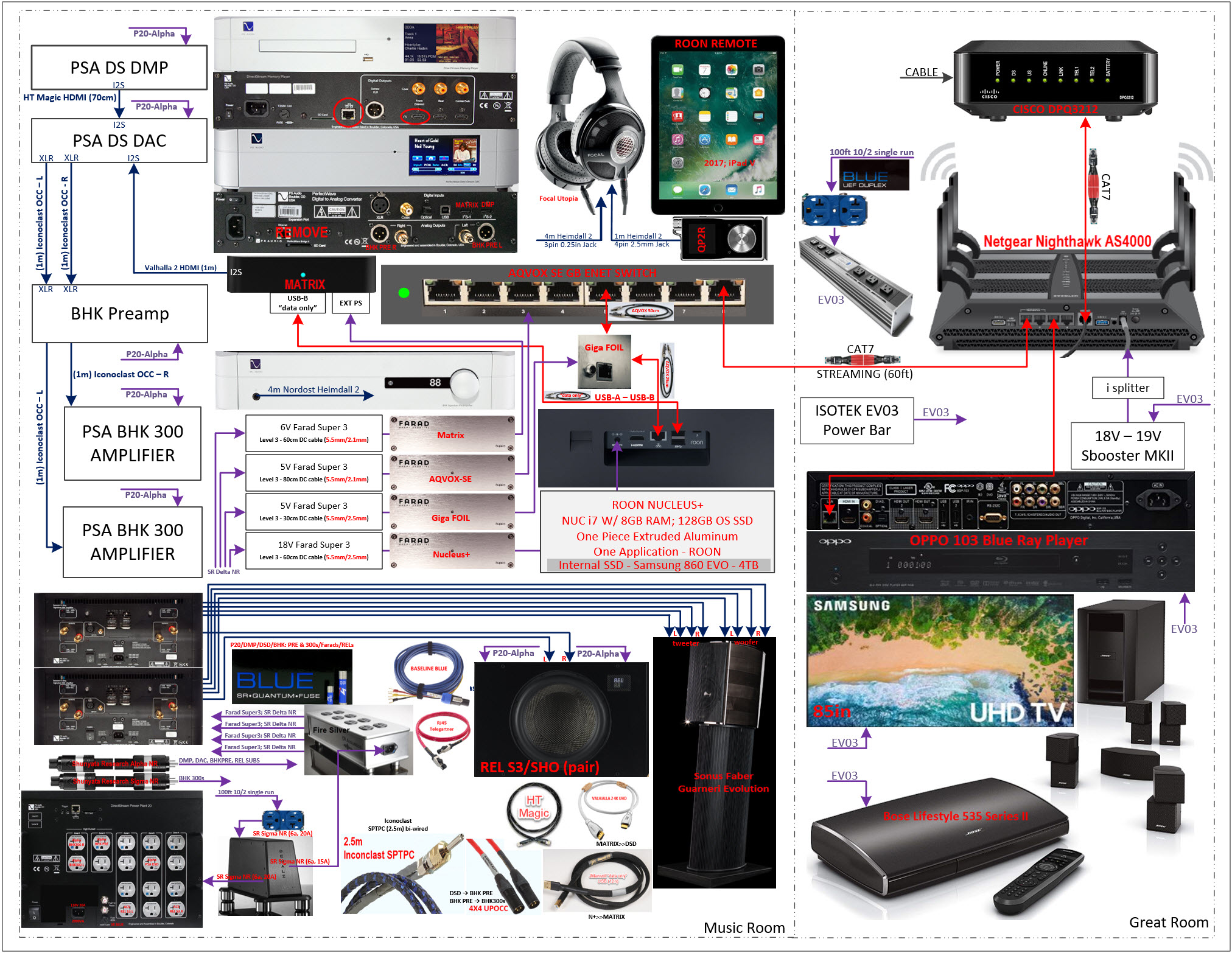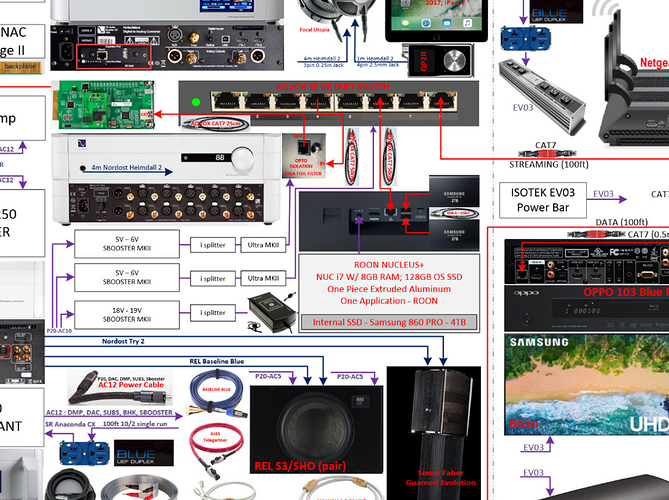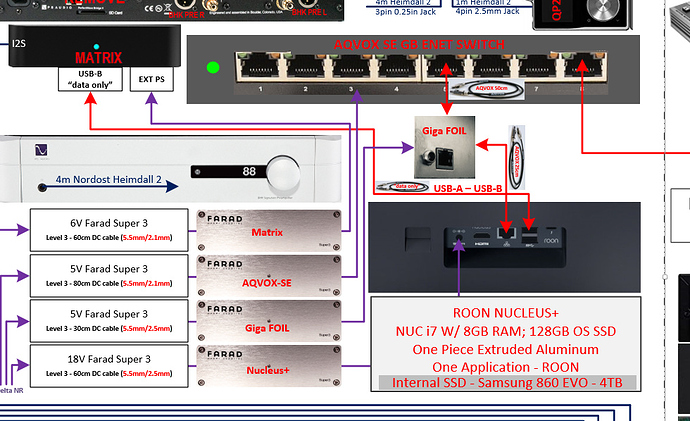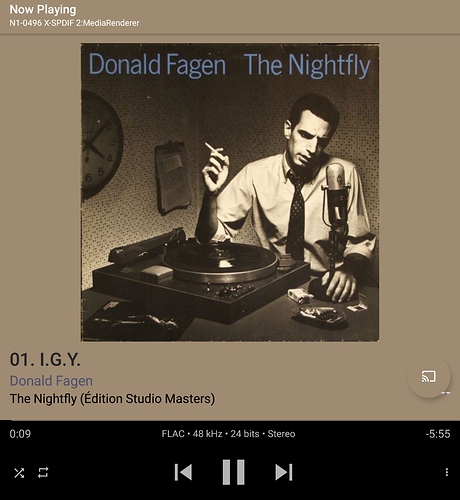@ejr1953 - does your DSD rear panel look like this?
Richard,
I think my DSD rear panel looks like that. The USB output from the Roon Nucleus Plus connects to the DSD with a Wireworld Silver Starlight cable.
@ejr1953 - did you get rid of the BII would be a more direct question, my apologies.
Richard,
I’m not sure what you are asking.
I have one of the early DirectStream DACs, without a Bridge, so the cover plate has not been removed.
Out of curiosity, did you ever try the GigaFoil directly through the Bridge before you removed it?
I never had a Bridge installed in my DirectStream DAC.
I currently have an I2S cable from my DirectStream transport into the DAC, and the USB cable from the Roon Nucleus Plus to the DAC. Both of those sources sound just awesome!
@fdreed - Fred - I believe this is BD#21 and I think I liked the SQ quite nicely… if memory serves me right. The AQVOX-SE and Giga FOIL were excellent additions. When I jump to the PF 2.16X I will go from Ethernet cable directly into the PF 2.16X Till then, I loves me my crutches… and like the beef says: “my shinny little boxes”. When I get that streamer, I will be A/Bing the AQVOX-SE, the Giga FOIL, against the PF 2.16X for galvanic isolation. Winner takes all…

Also, @JeffofArabica has the Giga FOIL and AQVOX-SE and loves them as I do… however, don’t think he ever had a BII.
This is BD#31 (present)
@ejr1953 - Gotcha - recap - DMP to DSD w/ I2S and N+ to DSD w/ USB correct? You thought about the Matrix? That little module is magical…

Richard,
You’ve peaked my curiosity. I’m not familiar with the Matrix.
@ejr1953 - OK, your homework assignment (if you choose) is to read through the Matrix thread and see what you think. I love the Matrix cause I get to A/B my DMP against my streaming and that little box is the cats meow! Matrix with no external PSU, Matrix w/ ext PSU… “data only cable”, blah, blah, blah… lot to unpack. See how it is set up in BD#31… Holy Shiet is it amazing!
Here is a bigger pic of BD#31 for some ideas before you jump the shark on thread Matrix alley… bumpy ride on the Matrix coaster… lot to unpack…

multiple clicks for zooming.

I’m still a little confused on exactly what makes Tidal’s “Master” or “MQA” files so special, beyond the fact that they seem to simply be higher resolution than Redbook CD’s 44.1/16 SQ. But I understand, beyond the higher resolution, MQA is some kind of compression, right? Is that where the controversy is?
Because, if there’s a Tidal MQA Master, there will be a high-res version in Qobuz. (but Qobuz doesn’t use any “MQA” or “Master” terminology. Only “Hi-Res Audio”.)
The one album that I’ve noted some curiosity with is Grateful Dead’s American Beauty. The Hi-Res versions on BOTH Tidal and Qobuz are supposedly DIFFERENT masters from the Redbook versions. I think some re-mix that Mickey Hart did a while back. More reverb, enhanced drums (no surprise there), and a couple of songs have completely different intros. (Listen to Brokedown Palace.)
While the difference between these versions and the redbook versions are obvious, the difference between Tidal MQA and Qobuz Hi-Res is NOT obvious, at least to me.
I’ve gotten into the practice of disabling MQA decoding/rendering within Roon. Not sure if it makes a gnat’s hair of difference, but there you go.
Well - there is a LOT of information and back-and-forth about that available here and elsewhere.
My two cents is that once we got some actual hard information about it from actual music producers (the MQA folks were super-cagey, super-friendly at shows, and ultimately unforthcoming for a very long time - still are) - it is both a form of compression and a remastering of whatever source material they used, whether it was with or without the Band’s permission (nothing new there). It seemed to be more about control of catalogs clothed in the guise of a “Perfect Sound Forever” sort of hype updated to the current digital world.
Oh, totally, i know that.
But just interesting that there’s aways a Qobuz hi-res when there’s a Tidal MQA. And I cannot hear the difference. (I know some say “Qobuz sounds better,” but i’ve never figured out how.)
So…Enjoy!
indeed.
perhaps a different thread, but curious if you all are just disabling MQA decoding/rendering within roon.
Well…they do;
“Qobuz Studio Masters - The sound as it was recorded in studio, delivered in its entirety. No compression. No concession. File always supplied by the manufacturer without any reprocessing. Albums in 24 bits with a sampling frequency up to 192 kHz, each clearly indicated. Qobuz Quality Guarantee: a specific program Qobuz Studio Masters , for even more quality and safety of purchase. A wide selection of albums Qobuz Studio Masters already has the label “Studio Master Quality Guarantee”. A team dedicated to albums Qobuz Studio Masters. The source, checks and tests each album one by one before the sale. Signal analysis, real-time listening, compliance audit are part of routine checks. After these checks, the label “Studio Masters Quality Guarantee” is attributed to the album.”
one example out of thousands:
@wijber - forget where you’re at on the MQA Thang, but IMO, the quoted text is complete Happy Horse Pucky – forum not allowing swear words ; )
One of the more egregious lies told by Labels and Catalog Owners in our lifetimes, since “Perfect Sound Forever”.
Oops, sorry! missed that.
@badbeef, @wijber referred to:
Qobuz Studio Masters
I think you are probably in agreement about MQA.
I don’t care too much about another format like MQA that does not bring a clear and transparent sound quality advantage.
For dedicated listening or listening without fatigue while I am working, I prefer the pure, not the stuff that is messed with.
For background music or in the car where even my old cassettes sounded wonderful I don’t care. But with my Stellar Gain Cell DAC and $600 Yamaha active monitors I can hear a clear difference between lossy and lossless.
So no need for fuzzy MQA with non transparent compression policy, which seems to serve no other goal than to extract more money out of our and the manufacturers (for which we ultimately pay anyway) pockets.
I purchased DSD128 from blue coast music, play through USB DoP, 24/192 BitPerfect straight from my iMac into the SGCD, 5m ATLAS USB SC. It’s really good.
I just tried MQA for the first time and I’m really impressed!! Playing Diana Krall (The Look of Love), her voice is more fuller and more present with MQA compared to DSD 64 file. Playing Oscar Peterson Trio (We Get Requests), MQA also has more presence and energy compared to 24bit 192k file!! I’ve always thought MQA was just a gimmick, but I now I can hear it is not.



